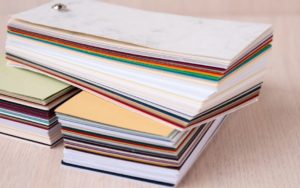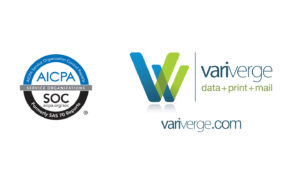Choosing paper for a print project, unless you have been working for a printer for a long while, it can be confusing. With so many choices – like paper weight, coating, colors, brightness, opacity – you may stand there with the “deer in the headlights” look on your face. Is paper just paper? No it isn’t.

I’m sharing this article with you to hopefully give you an insight of the difference it can make, especially in the usage for each project. Do you need to write on it? Use uncoated. Does it need to be sturdy? Try a card stock. Read through, if you have any questions, feel free to call our sister company, Panhandle Presort Services or Plains Presort Services to arrive at the best paper for your project.
The type of paper you choose for any print project makes a huge difference.
First off, why paper? Well, paper is a sustainable, environmentally sound choice for any project. Paper stands out and gets read. In this day and age, when the trend is to go “paperless,” customers notice and value holding a tangible, beautiful marketing piece. If you want a project to get noticed, choose paper…but choose the RIGHT paper.
Here’s how to pick paper weight, coating and more…
Paper Weight & Thickness
Paper thickness is measured in thousandths of inches, referred to as “points.” That makes 18pt paper is equal to .018 inches thick. Typically, paper thickness is used when describing different types of cover stock. A business card, for example, is printed on 12-14pt stock.
Paper weight on the other hand is a little more confusing. Weight standards refer to the thickness and the sturdiness of the paper (not simply the weight of one sheet). For this reason, you’ll often see paper referred to as two different weights. Some places also refer to paper in GSM (grams per square meter).
The number you often see when picking paper weight refers to the weight of paper in stacks of standard-sized pieces. What you think of as “regular printer paper” is usually 20# bond weight. It may also be referred to 50# text. Letterhead and other papers may range up to 32# bond or 80# text. Cardstock or cover stock is between 90#-100# and may be referred to as Bristol, index or cover.
Paper Opacity
Opacity (or paper transparency) is another paper quality to consider. Some paper, such as the cardstock used for postcards is 100% opaque; when you look at it, you can’t see through to the other side. Vellum and tracing paper on the other hand are much more transparent. Opacity ranges from 0 (completely sheer) to 100% (can’t see through it at all). If you’re working on a two-sided project, you’ll want paper that won’t show through to the other side.
Paper and Coating
Finishing options are matte or gloss. Gloss makes colors appear brighter and images sharper. Matte will soften a piece. Paper may also come in gloss, silk and matte. When combined with the coating, the possibilities are endless. You can combine paper weight, brightness and coatings to create a truly outstanding and unique marketing piece your customers will love.
Coatings come in three types: varnish (applied at press and can be spot-applied), aqueous (water-based, applied to the entire piece) and UV (cured with an ultraviolet light). UV gives off the most luster and withstands roughest treatment.
VARIVERGE
888-288-6693
Amarillo & Dallas Texas Locations | Variverge.com

